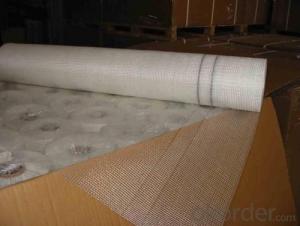Fiberglass, a material that has been around for decades, has found its way into various industries, and one of the most significant applications is in the manufacturing of composite pipes. These pipes are known for their durability, strength, and resistance to corrosion, making them ideal for various applications, from water transportation to chemical handling. But what exactly is fiberglass, and how does it play a role in composite pipe manufacturing? Let’s dive in and explore the fascinating world of composite pipes.
The Magic of Fiberglass
Fiberglass, also known as glass-reinforced plastic (GRP), is a composite material made of glass fibers embedded in a resin matrix. The combination of these two materials results in a strong, lightweight, and versatile material that can be molded into various shapes and sizes. The magic of fiberglass lies in its ability to be tailored to specific needs, making it a popular choice for many industries.
Composite Pipe Manufacturing Process
The process of manufacturing composite pipes involves several steps, and fiberglass plays a crucial role at every stage. Here’s a breakdown of the process:
1. Design and Planning: The first step is to design the pipe according to the specific requirements of the project. This includes determining the diameter, length, and wall thickness of the pipe.
2. Mold Preparation: A mold is prepared based on the design specifications. This mold will serve as the form for the pipe during the manufacturing process.
3. Resin Application: The next step is to apply a layer of resin to the mold. This resin acts as the binding agent for the fiberglass, ensuring that the fibers stay in place and maintain their shape.
4. Fiberglass Wrapping: Once the resin is applied, the fiberglass is wrapped around the mold. This is done in multiple layers to ensure the pipe has the required strength and durability.
5. Curing: After the fiberglass is wrapped, the pipe is left to cure. This process allows the resin to harden and fully bond with the fiberglass, creating a solid and stable structure.
6. Post-Curing: The final step in the process is post-curing, which involves heating the pipe to a specific temperature to ensure the resin is fully cured and the pipe is ready for use.
Advantages of Fiberglass in Composite Pipes
There are several advantages to using fiberglass in the manufacturing of composite pipes, including:
– Corrosion Resistance: Fiberglass composite pipes are resistant to a wide range of chemicals and corrosive substances, making them suitable for transporting corrosive fluids.
– Lightweight: Compared to traditional pipes made from materials like steel or concrete, composite pipes are much lighter, making them easier to transport and install.
– High Strength-to-Weight Ratio: Despite being lightweight, composite pipes have a high strength-to-weight ratio, ensuring they can withstand high pressures and loads.
– Longevity: Fiberglass composite pipes have a long lifespan, often outlasting traditional pipes due to their resistance to corrosion and wear.
– Low Maintenance: With their durability and resistance to corrosion, composite pipes require minimal maintenance, reducing the overall cost of ownership.
– Customizability: The manufacturing process allows for the customization of the pipe’s properties, such as strength, flexibility, and resistance to specific chemicals, to suit the needs of the application.
Real-World Applications
Composite pipes made with fiberglass have found their way into various industries, including:
– Municipal Water Systems: For transporting clean water to homes and businesses.
– Industrial Chemical Handling: For safely transporting chemicals in industrial settings.
– Oil and Gas: For use in pipelines to transport oil and gas products.
– Mining: For dewatering and transporting slurry in mining operations.
– Agriculture: For irrigation systems to deliver water to crops.
The Future of Fiberglass Composite Pipes
As technology advances and the demand for sustainable and efficient solutions grows, the role of fiberglass in composite pipe manufacturing is expected to expand. Innovations in materials and manufacturing processes will likely lead to even stronger, more durable, and more versatile composite pipes.
In conclusion, fiberglass plays a vital role in the manufacturing of composite pipes, offering a range of benefits that make them an attractive option for various applications. From their corrosion resistance to their lightweight nature, fiberglass composite pipes are a testament to human ingenuity and the endless possibilities of material science.

